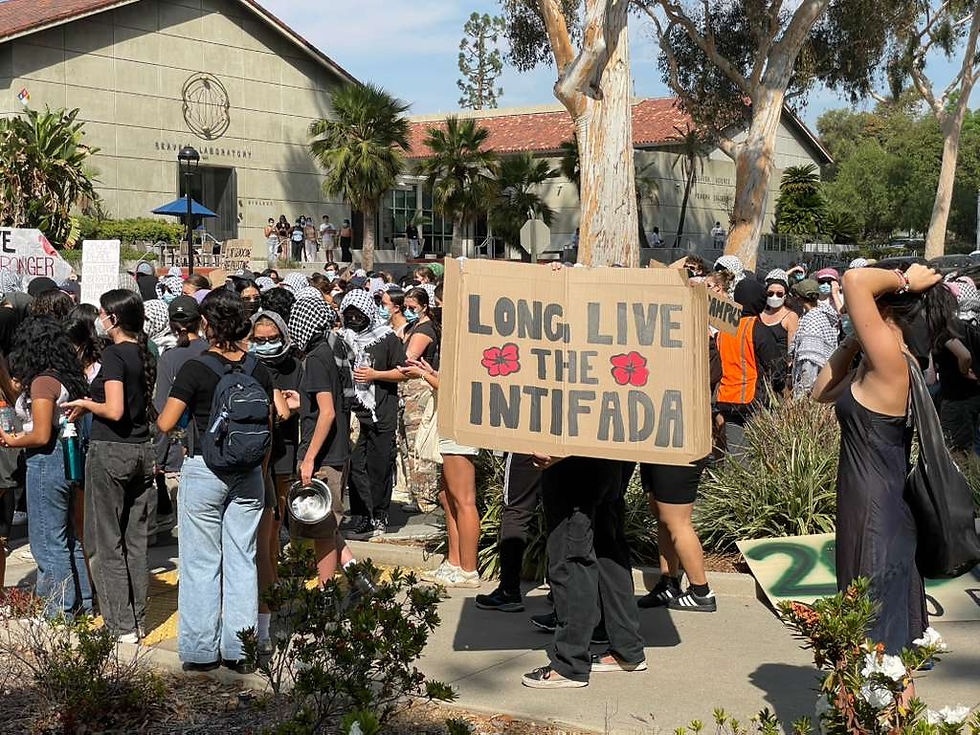Who’s the Fairest of Them All?
- The Claremont Independent

- Oct 27, 2014
- 2 min read

CMC Professor Emeritus Ward Elliott. Image Courtesy Ward Elliott.
With midterm elections just around the corner and a heated battle between Democrats and Republicans over control of the Senate, it becomes imperative to ask the daunting question, “What will you do on November 4?” Instead of having to go around and take a poll, Professor Ward Elliott’s study entitled, “Political Attitudes at the Claremont Colleges,” takes a deeper look into the political trends on the 5Cs throughout the last 40 years. His findings not only give us some insight into party preference, but also dispel some deeply ingrained rumors about CMC culture.
From students to faculty, many would make the argument that CMC is a conservative utopia that looks down on the rest of the 5Cs. However, let’s put aside all the Yik Yak comments and examine the legitimacy behind these claims.
Students
Professor Elliott’s study spends a lot of time on students of the 5Cs in order to get a clear picture on their beliefs and establish a consistent trend.

CMC Student Political Preference, 1972-2012
As Figure 1 (above) from the study demonstrates, since the mid 1990s, CMC has seen a huge turnover in political preference with a 45 percent liberal to 17 percent conservative affiliation in the year 2012. Professor Elliott makes the observation that, “Apart from the 1980s, liberal students have outnumbered conservative by more than two to one.” These findings indicate this growing political direction CMC is taking as more and more students identify as liberals. Professor Elliott takes a step further by focusing in on the increase in liberal views on the CMC campus in relation to the other campuses, pointing out that, “% Change (from conservative to liberal) during 1988-2012 was +35%.” If we were to compare that to the percent change from the other 4 campuses, +16% (HMC), +13% (PO), +16%(SCR), and +19%(PI), that’s more than double the amount of any other campus during the same period!
Faculty
The faculty are no exception to the trend that Elliott spotted among 5C students.

5C Faculty Republican population, broken down by school
Only 16 registered Republicans were found from the entire 532 5C core (permanent) faculty, with only one female among them. In other words, only 6.0% of all 5C faculty members are registered as Republicans. Professor Elliott does point out that “only half of the 5C core faculty were found, so the most likely estimates are twice the numbers found: 14.8% for HMC, 13.0% for CMC, Zero for Pomona, Pitzer, and Scripps, and 6.0% for all the 5C’s.” Although CMC may have a higher percentage of Republican faculty members than the other 5Cs, the number is still significantly lower with a “2.2:1 ratio” of Democrat to Republican. Moreover as Professor Elliott explains, “Claremont’s percentages are not out of line with those of other elite institutions, which are generally thought to be more lopsidedly/purely liberal than less elite campuses.” This is an important fact as outsiders look to CMC and some of the 5Cs as the Ivy League of the West Coast and in many cases, make comparisons between different aspects of each institution. It seems like these thoughts about CMC are not an accurate depiction of the political culture on campus.
Implications
This study raises the question about which campus truly is more tolerant and open-minded when it comes to political views. Contrary to popular belief of campuses like Pitzer and Pomona being tolerant and CMC being the least, based on this study, it seems as though the opposite is true.

Courtesy Ward Elliott
Figure 2 (above) shows the Student Presidential Preference, 2-Party, from 1972-2012 of CMC, Pomona, and Pitzer. Professor Elliot explains that, “ Since 1972, 65%-98% of Pomona and Pitzer students have favored the Democratic ticket in Presidential elections, 24-52 points more than the general public, and 16-52 points higher than CMC students.” Even though we are only taking a look at one specific factor, presidential elections, these numbers do highlight an important point about the political diversity we see on the campuses. With CMC gaining more liberal students while maintaining a presence of conservative-minded students, an argument can be made about an, if not rich, at least identifiable contrast in political preferences on campus. On the other hand, with such a strong left-leaning population, upward to 98% for students, on campuses like Pomona and Pitzer, and a faculty with no registered Republicans, the notion of political diversity is completely out of the question.
I was able to attend CMC Professor Jack Pitney’s Athenaeum talk entitled “What’s at Stake in these 2014 Mid-Term Elections,” where he talked about the Democrats’ and Republicans’ chances of victory in Congress. By the end of the speech, Professor Pitney concluded that a victory for the Republicans in both the House and the Senate was likely. However he was careful to point out that these elections still “could go either way.” Unfortunately, the likelihood of students in Pomona and Pitzer voting “either way” is as likely as George Will setting foot on Scripps’ campus. Although Professor Elliott’s study demonstrated how CMC’s political demographics are not nearly as one-sided as its neighbors, that’s really not saying much.
.png)



Comments